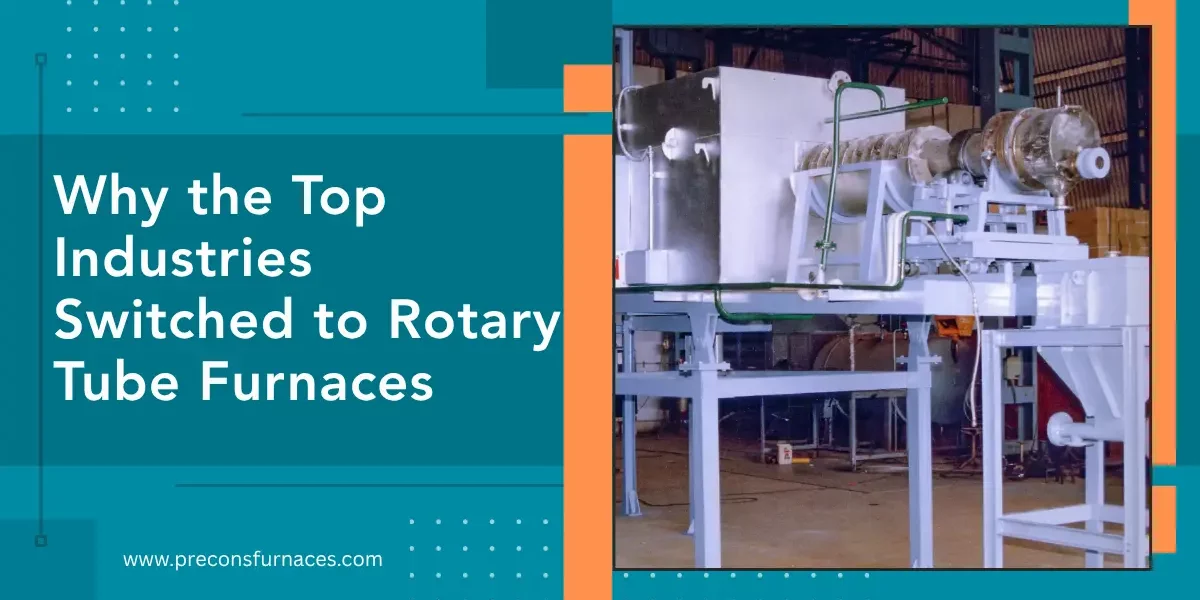
Research laboratories and industrial facilities processing granular and particulate materials face a persistent challenge: achieving consistent heat treatment results while maintaining continuous throughput. Traditional static furnaces create temperature gradients and material segregation that compromise product quality and processing efficiency.
Enter rotary tube furnaces—the specialized heating systems that have revolutionized continuous material processing across material science, metallurgy, and chemical synthesis applications. But what specific advantages make rotation such a game-changing innovation for continuous processing operations?
The Fundamental Advantage of Rotation
Rotary tube furnaces feature a cylindrical heating chamber that rotates continuously during operation, creating dynamic material movement throughout the heating cycle. This seemingly simple mechanical innovation solves multiple processing challenges simultaneously.
Unlike static tube furnaces, where materials remain stationary, rotation provides constant material tumbling, ensuring that every particle experiences identical thermal exposure—eliminating the hot spots and cold zones that plague conventional systems.
Superior Temperature Uniformity Across Material Beds
Eliminating Thermal Stratification
In static furnaces, granular materials naturally stratify with upper layers shielding lower material from direct heat exposure. This creates:
- Inconsistent product quality with over-processed and under-processed particles
- Extended processing times to compensate for poor heat transfer
- Higher energy consumption due to thermal inefficiency
Rotary design eliminates stratification by continuously redistributing material throughout the heating zone, ensuring uniform thermal exposure for all particles.
Enhanced Heat Transfer Efficiency
The tumbling action created by rotation significantly enhances convective heat transfer between the furnace atmosphere and material surfaces. This results in:
- 30-40% faster heating rates compared to static beds
- Reduced energy consumption per kilogram of processed material
- Improved temperature control precision throughout the material bed
Continuous Flow Processing Capabilities
Rotary tube furnaces excel at continuous material flow through the heating chamber—a critical advantage for high-throughput operations.
Material Flow Mechanics:
- Feed material enters at one end of the rotating tube
- Controlled rotation speed regulates residence time within heating zones
- Continuous discharge of processed material maintains steady-state operation
- No batch cycling downtime maximizing productivity
Real-World Impact: Continuous processing capabilities enable 24/7 operation for industrial applications like catalyst production, ore calcination, and waste remediation—dramatically improving facility utilization rates.
Atmosphere Control and Chemical Reaction Management
Controlled Oxidation and Reduction
Many material processing applications require precise control of the atmosphere. Rotary tube furnaces with mechanical seal designs maintain:
- Controlled gas environments prevent unwanted oxidation or reduction
- Uniform atmosphere distribution through material tumbling
- Gas-solid reaction optimization for applications like carburization and purification
Enhanced Gas-Solid Contact
The continuous material movement ensures optimal contact between process gases and particle surfaces, critical for applications including:
- Gaseous reduction of ores
- Catalyst synthesis requires uniform surface treatment
- Controlled oxidation for speciality materials
- Solid-solid reactions with improved reaction kinetics
Versatile Application Range
Rotary tube furnaces demonstrate exceptional versatility across diverse processing requirements:
Research Applications:
- Material science experiments requiring precise thermal profiles
- Metallurgical slag analysis with controlled atmosphere conditions
- Ceramic doping with rare earth metals
- Pigment synthesis for specialized coatings
Industrial Processing:
- Calcination operations from 850°C to 1100°C
- Pyrolysis and drying of temperature-sensitive materials
- Waste remediation with continuous throughput
- Pre-sintering of ferrites for electronics applications
Process Control and Quality Assurance
Advanced control systems in modern rotary tube furnaces enable:
- Programmable rotation speeds optimizing residence time for different materials
- Multi-zone temperature control creates precise thermal profiles
- Automated atmosphere management ensures consistent processing conditions
- Data logging capabilities supporting quality certification requirements
Economic Advantages for Continuous Operations
Facilities implementing rotary tube furnaces for continuous processing realize substantial benefits:
Productivity Gains:
- Continuous operation eliminates batch cycling inefficiencies
- Higher throughput per unit of furnace volume
- Consistent product quality reduces rejection rates
Cost Reductions:
- Lower energy costs through improved thermal efficiency
- Reduced labour requirements with automated continuous operation
- Minimized material waste from improved process control
Selecting the Right Rotary Tube Furnace Configuration
Successful continuous processing requires matching furnace specifications to application requirements:
Capacity Considerations: Systems range from 100 to 275 Kg/hr, accommodating varying production scales. Temperature Requirements: Options from 850°C to 1100°C covering diverse material processing needs. Heating Methods: Electric or gas-fired systems optimized for different operational contexts. Atmosphere Control: Mechanical seal designs with optional scrubber systems for environmental compliance
Ready to transform your material processing operations with continuous rotary tube furnace technology? Precons Furnaces engineers specialized in rotary tube furnaces serving material science research and industrial processing applications worldwide. Our systems deliver the temperature uniformity and continuous processing capabilities that demanding applications require.